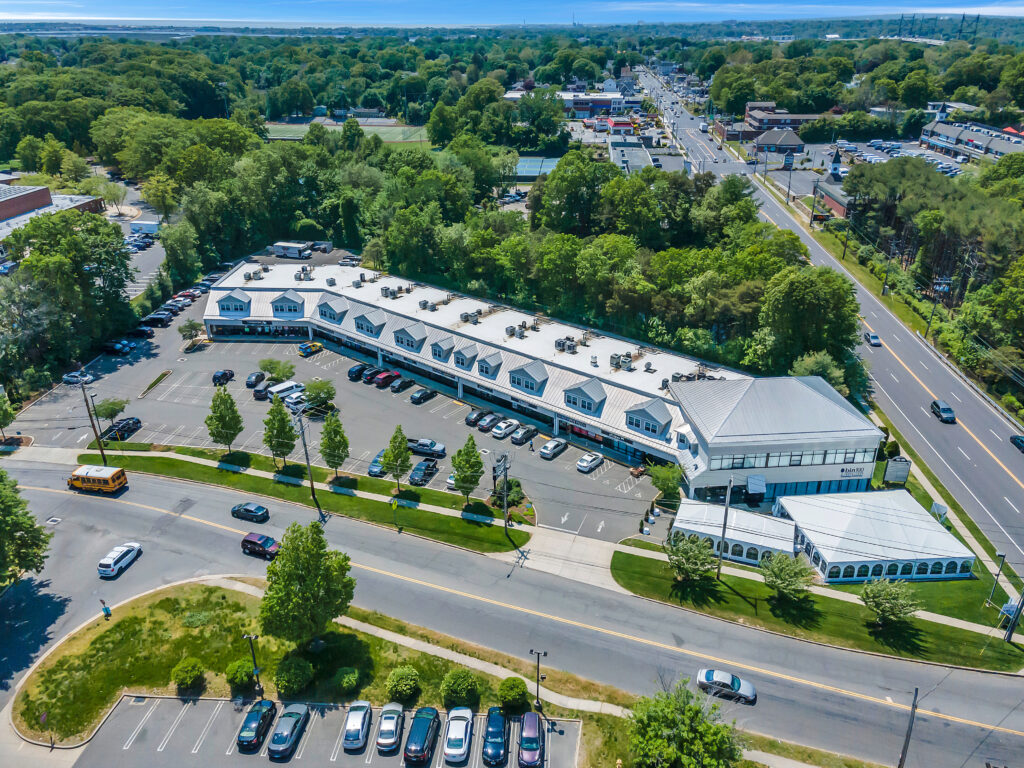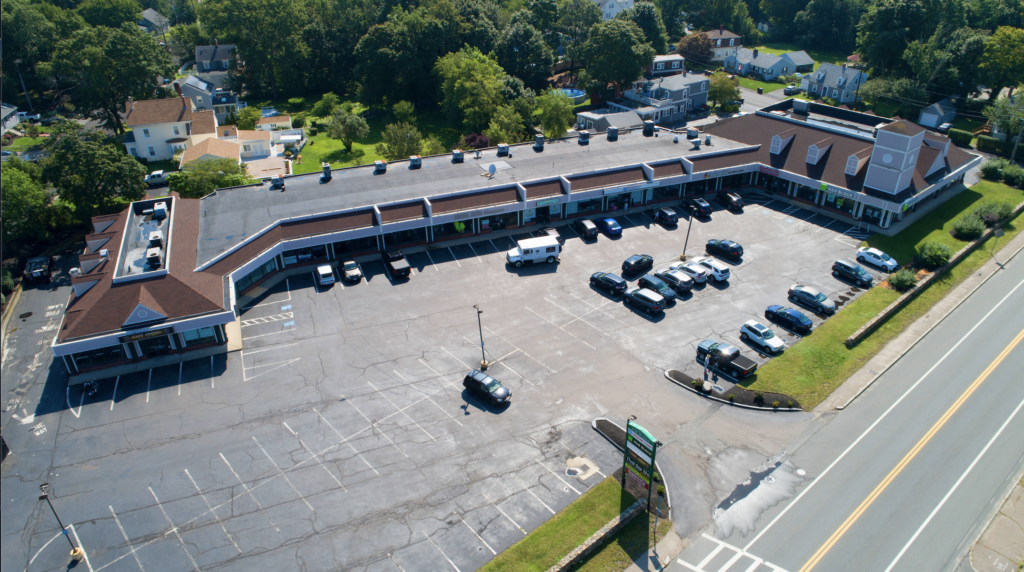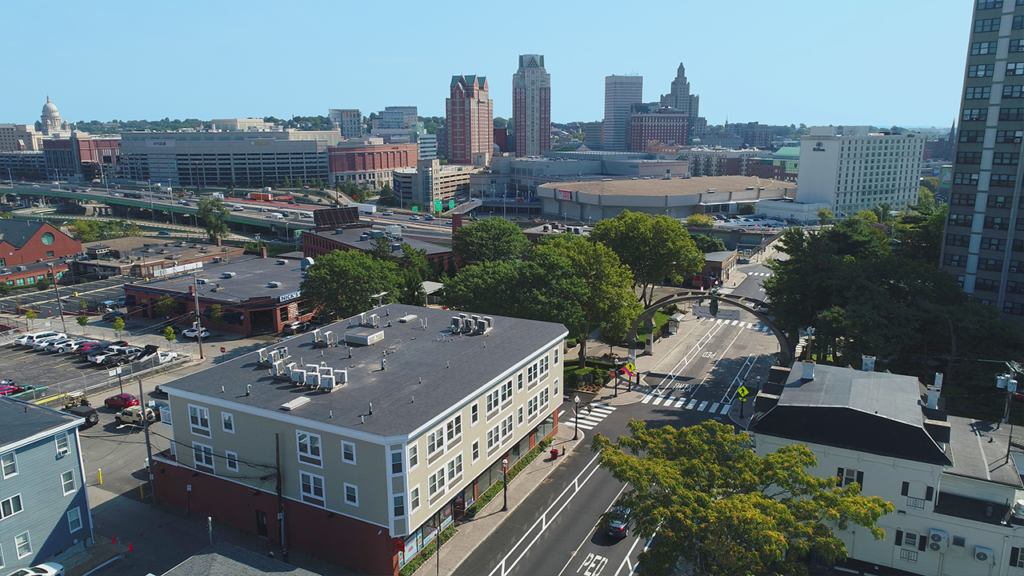
As a landlord, you ideally want to minimize your costs of doing business. For many operators, this means passing all possible expenses onto their tenants. Not paying utilities such as electricity and gas frees up your time and money. Dealing with energy suppliers, maintenance companies, and snow removal is never ideal.
Unfortunately, passing on these responsibilities to tenants may mean you need to decrease your leasing rates, resulting in less rental income. As a landlord optimizing retail occupancy costs should be one of your primary concerns; taking on more of these responsibilities may mean more work but often results in more money in your pocket.
Optimizing retail occupancy costs
Before diving into how you can optimize your retail occupancy cost, you’ll want to understand what occupancy means as it relates to your real estate investment.
What is occupancy?
Occupancy is defined as “living in” or “using a premises or property as a tenant or owner”. As a retail landlord, your occupants are the tenants renting your property to operate their businesses.
What are retail occupancy costs?
Occupancy cost is the summation of “total expenses” a tenant incurs to operate their business as described in their lease. Occupancy cost is typically shown as a proportion.
To calculate this, you must perform three steps:
1: Calculate Total Tenant Occupancy Cost: – Total occupancy costs include Base Rent, percentage rent, reimbursements paid by the tenants (CAM Charges), and other fees paid by the tenant to use the property. Costs not included are business operating expenses, such as payroll, advertising, and sales taxes.
2: Determine Gross T12 Tenant Sales:
The total sales your tenants did in one calendar year.
3: Use the Occupancy Cost Percentage Formula.
Occupancy Cost Percentage = Tenant Occupancy Cost / Tenant Sales
The retail occupancy cost ratio is an important tool in negotiating leases; if the percentage is too high, the tenant may struggle to operate and need reduced rent to stay. If the tenant’s occupancy cost is low, a landlord might have room to increase rents.
What is a good occupancy cost ratio?
A good occupancy cost ratio varies depending on your tenant’s industry. Per Adventures in CRE, “a healthy Occupancy Cost Percentage for a grocery tenant might be 2.5%, a similarly healthy Occupancy Cost Percentage for an apparel tenant might be 12%+.” The reason for this is because of industry margins.
A high-profit margin industry can support a higher occupancy cost than a low-profit margin business. As an operator, understanding the relationship between retail occupancy cost and tenants’ margins will help you make a more informed decision when optimizing your tenant base.
Optimization

It is important to keep track of occupancy cost ratios for several reasons.
Try to compare your tenants with your competitors or other similar businesses. Remember, ideally, your businesses; should have the lowest tenant occupancy cost and highest sales possible; this will result in a lower occupancy cost percentage.
A better occupancy cost ratio helps optimize your vacancy rates. Tenants will rent from you longer if they are performing well. Your most profitable tenants will consistently make high ratios.
But be wary tenants who have high ratios are more prone to struggle financially and will be less likely to stay and make rent.
Retail occupancy costs will vary by lease type. Some, like gross leases, place more financial responsibility on the landlord when a net lease would place more responsibility on the tenant. Millionacres describes the following as common examples comprising retail occupancy costs for commercial real estate.
- Base rent
- Local taxes
- Property taxes
- Property insurance or building insurance
- Utilities
- Common-area maintenance
- Ongoing property maintenance or upgrades
- Snow removal or lawn care
Optimizing strategies for retail occupancy cost
- Determine responsibilities
- See what you can take on yourself and what would be better in the hands of the tenant. Maybe that means doing some of the maintenance yourself. If you are considering going this route, check out our blog post, 5 Major Challenges of Managing Apartments as an Investor. While this is not specific to retail, many fundamentals are similar. Being a more hands-on operator means you won’t have to outsource everything, leaving you with more profit at the end of the month.
- Do your research
- Your tenant might not be doing their due diligence with these items.
- Handling these accounts yourself will allow you to save by choosing more cost-efficient solutions to these operating costs.
Increasing leasing rates
What are leasing rates?
Leasing rates are defined as “The amount of money paid over a specified time period for the rental of an asset.” Essentially your leasing rates are your rental income from your retail tenants. As a landlord, it is in your best interest for your leasing rates to be competitive.
You want your rates to fall in the ballpark of market rates while being as high as possible.
Leveraging your leasing rates maximizes your income and minimizes tenants jumping ship to find a better deal.
Understanding your market

It is extremely important in the retail market to do your homework and understand who your potential tenants are. What is the commercial market like; types of tenants, traffic volume, potential growth areas? Is your plaza closer to other places of businesses or perhaps a college or high school? Understanding your tenants’ customer base will help you better optimize retail occupancy.
Equally important is understanding your competitive market and tenant base. What other businesses in the area are you potentially competing with, which ones might complement yours? Learn what their leasing rates are if you can. To learn about local rates, reach out to one of our agents within the territory. Knowing this will provide you with the best avenue to raise leasing rates for your operation.
How does this play into raising your leasing rates? You can use this knowledge to negotiate the highest leasing rates possible for your tenants. Find businesses that would make substantially more money in your plaza than the one across town. Use your location to your advantage when choosing tenants because this will dramatically affect your bottom line. Any sensible business can justify a 10% increase in rent for a guaranteed 25% increase in revenue.
Marketing
Reach qualified tenants through a well-thought-out marketing campaign. CCIM, a premier provider of commercial real estate education, recommends the following tactics to landlords when marketing.
- Target Service Tenants
The smaller your retail plaza, the better suited you are to target service tenants. Examples of service industries tenants include restaurants, salons, convenience stores, etc.
This type of tenant is attracted to and will benefit from a retail plaza with easy parking, access, and visibility from the street, compared to a large indoor mall or plaza. Large-scale options may receive higher foot traffic but lose out on convenience and visibility.
- Tighten Your Budget
Marketing traditionally implies spending a large sum of money to create visibility. As a landlord, marketing in this way is probably not the most viable option. Your goal should be to motivate your target audience; while keeping paid promotional costs low.
In the digital age, building curb appeal is still very important. Keeping up with your maintenance kills several birds with one stone by making your property attractive to prospective tenants, existing tenants, customers and making it photograph well. After all, word of mouth is your best marketing tool, and all these people can promote you for free. Tenants will talk about your retail building, and customers will be more inclined to take photos and recommend your tenant’s businesses to their friends.
- Social Media Networking
Many large retailers have created a significant presence online. You can do this on a smaller scale utilizing the existing strategies large-scale malls and your tenants’ businesses. Try having your tenants promote their specials or sales on Facebook and LinkedIn. It’s free!
Competitive rent
It’s good to know what’s going on around you. As an operator, you should be keeping a running tally of what rents are like in your area for similar retail properties. If your leasing rates are far too high, you risk losing tenants to competitors. You will also have less flexibility to raise these rates in future years.
On the other hand, rents that are too low; will attract subpar tenants; and lessen the value of your investment. Your goal should always be to keep rents as high as possible but still maintain room for increases; while keeping in the ballpark of your competitors.
Incentives
According to CoStar, lease incentives are “enticements lessors provide to encourage lessees to sign a lease. The most common type of inducement is the tenant improvement allowance (TIA), which reimburses or pays lessees for property improvements.”
Here is a list of common lease incentives:
- Providing a period of free rent
- Assisting in tenant buildouts
- Paying for moving expenses
- Paying a lessee’s termination penalty on an existing lease
- Buying out a lessee’s existing lease obligations
Attracting the right tenants
To attract an anchor tenant – and, ideally, a national credit tenant –it’s key to know data about your plaza’s or strip mall’s surroundings. Consider:
- How close is your tenant’s major competitor to your plaza?
- What demographics do your existing tenants draw to the plaza?
- Who do you have the opportunity to attract with the right anchor tenant? (Population size, demographics, disposable income, etc.)
- What is the daily traffic count in front of your property? (Many credit tenants have a minimum requirement of 15,000 cars per day.)
- Is your plaza surrounded by predominantly residential; or commercial property?
- What are the upcoming or current; residential and commercial building projects in the area?
- Is there comparable retail space available in other nearby plazas?
- Are the accessibility and visibility you offer superior to these spaces?
- Does your plaza offer better parking?
Knowing the answers to these questions will help identify the right tenant for your space. Also, consider whether giving the plaza a specialty focus can help increase demand for retail space.
Remember, every market is different. The right retail mix for a plaza in North Shore Boston may differ widely from a plaza in the Bronx. The same can be said for mixed-use space, where the retail tenants occupy the first floor, and professional office space occupies the second floor and above.
The bottom line, the importance of deep local market insights can’t be overstated. Do your due diligence and don’t necessarily sign the first retail tenant who makes an offer.
Importance of national credit tenants
Owners of retail investment properties often look for ways to make their properties more attractive to large, long-term credit tenants – think CVS, Walgreens, McDonald’s, Chase Bank, etc.
For landlords whose plazas have typically been occupied by smaller, mom-and-pop businesses, repositioning the plaza to attract larger tenants can be particularly challenging. However, having your strip mall anchored by a national credit tenant often makes the property more attractive to other tenants.
For example, a credit tenant can increase traffic and occupancy rates; each enhances the value of the plaza and justifies a higher price per square foot.
What are anchor tenants and national credit tenants looking for in real estate?
Retailers want to be in vibrant, accessible spaces that draw the right traffic.
If you own a strip mall that has historically been comprised of smaller, local tenants, you may need to make cost-effective modifications to the property.
These changes will make it more attractive to the larger tenants you are seeking. For example, would combining two smaller, vacant spaces allow you to offer a larger space that could fit a national retailer’s minimum square footage requirements? If you aspire to attract a Starbucks, Dunkin’ Donuts, or other coffee outfits, do you have the flexibility to allow for a drive-thru window? How can you adapt the space to accommodate a loading dock for a big box retailer?
What makes a national credit tenant attractive?
National credit tenants are typically stable tenants; in many instances, they will be willing to sign a longer-term lease than smaller, more local tenants. National credit tenants, such as big-box stores, draw traffic which is beneficial to other tenants in the plaza or strip mall.
While the volume of space they need and the specifications of the space may require modifications to your existing building, the ROI can be long-lasting. These large-scale tenants often make properties more attractive to other real estate investors – an important consideration for when it becomes time for you to sell.
The Takeaway: Best practices as a retail operator
Overall, retail can be a very rewarding subset of the commercial real estate business. There are plenty of opportunities and making a few adjustments to your retail occupancy costs and tenant base, leaving you better positioned to take in better rents at the end of the month.
If you like this blog post, please share it!

